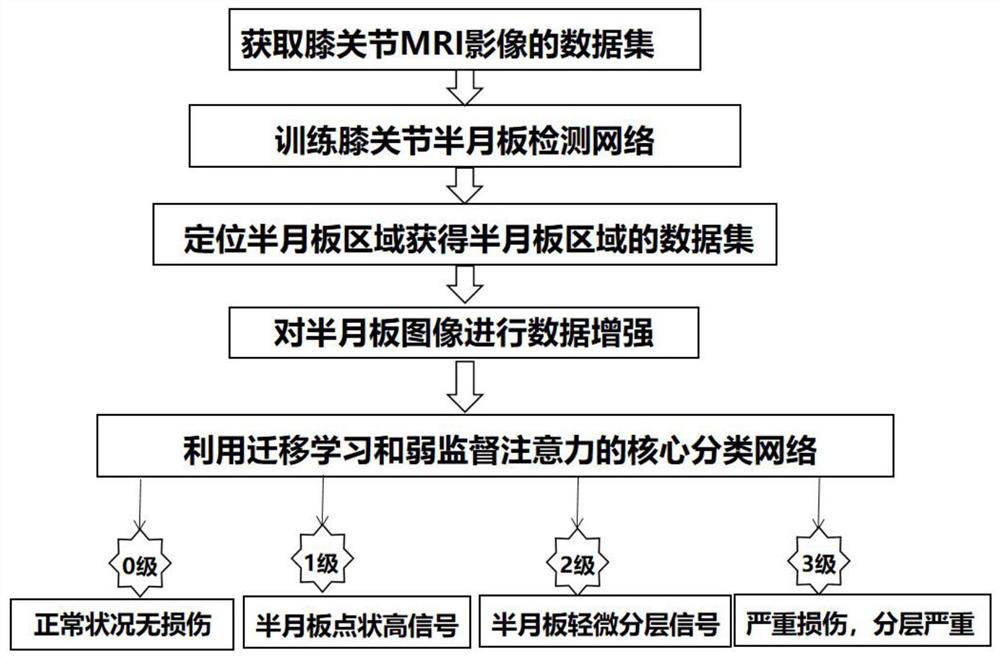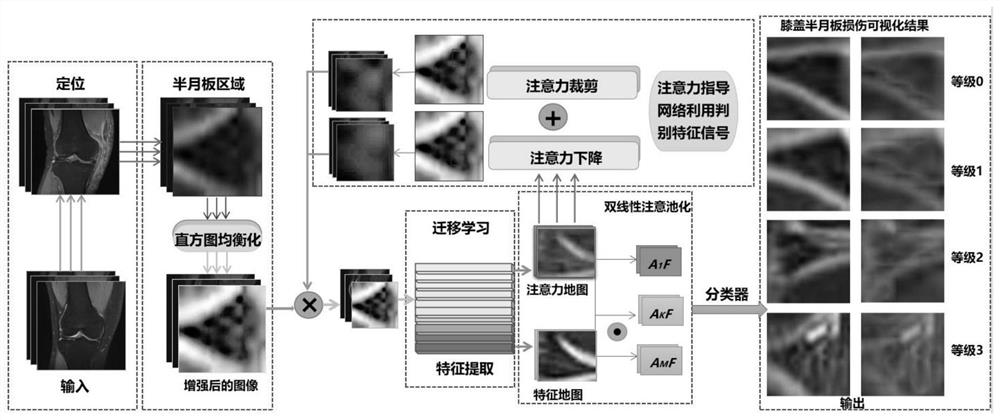Meniscus injury grading method based on mixed attention weakness supervised transfer learning
A transfer learning, meniscus technology, applied in the field of image processing, can solve the problem of inability to distinguish the level of knee meniscus damage, and achieve the effect of strong clinical practicability
- Summary
- Abstract
- Description
- Claims
- Application Information
AI Technical Summary
Problems solved by technology
Method used
Image
Examples
Embodiment Construction
[0035] The embodiments and effects of the present invention will be described in detail below in conjunction with the accompanying drawings.
[0036] refer to figure 1 , the implementation steps of this embodiment include the following:
[0037] Step 1. Obtain a dataset of knee joint MRI images.
[0038] 1.1) The data of 2,000 cases of knee joint MRI imaging examinations were obtained from the imaging department of the tertiary first-class hospital, and the data that did not meet the requirements of clinical diagnosis of knee meniscus injury such as the history of surgery and the history of internal fixation of the joint were excluded;
[0039] 1.2) Utilize the sagittal and coronal slice images from the data selected in 1.1) to form a data set for positioning the meniscus region, and use 60% of it as a training set and 40% as a test set;
[0040] 1.3) For all the MRI images of the knee joint in the meniscus area positioning dataset obtained in 1.2), mark the labels of the meni...
PUM
 Login to View More
Login to View More Abstract
Description
Claims
Application Information
 Login to View More
Login to View More - R&D
- Intellectual Property
- Life Sciences
- Materials
- Tech Scout
- Unparalleled Data Quality
- Higher Quality Content
- 60% Fewer Hallucinations
Browse by: Latest US Patents, China's latest patents, Technical Efficacy Thesaurus, Application Domain, Technology Topic, Popular Technical Reports.
© 2025 PatSnap. All rights reserved.Legal|Privacy policy|Modern Slavery Act Transparency Statement|Sitemap|About US| Contact US: help@patsnap.com



